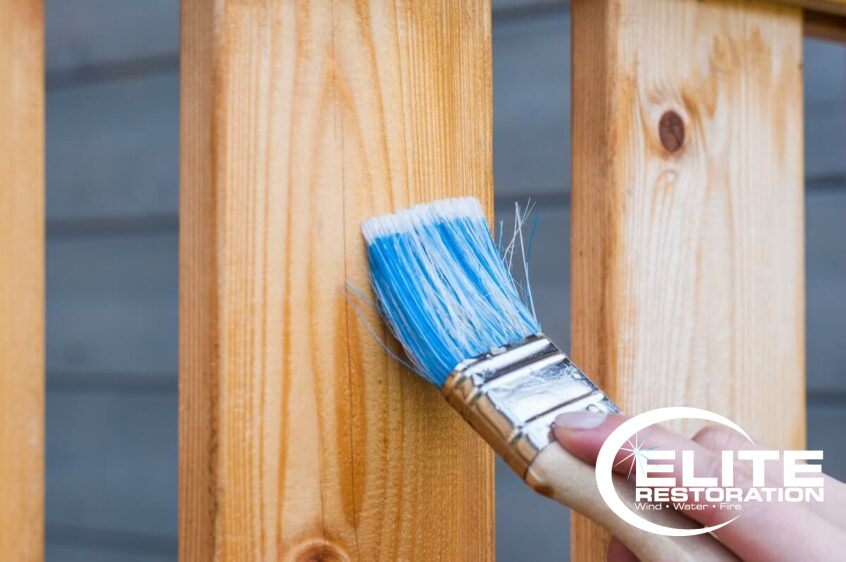4 DIY Home Improvement Project Ideas

DIY home improvement projects have a lot of different benefits! They allow you to personalize your living space, save money on costly renovations, and they’re a great way to add additional value to your home. Whether you’re new to do-it-yourself jobs or an experienced DIYer, there are plenty of projects you can tackle on your own. Here are four ideas for DIY home improvement projects, and instructions on how to do them!
1. Paint a Room
One of the easiest and most affordable ways to refresh a room is to give it a fresh coat of paint. Start by choosing a color that you love and that complements the existing decor. Depending on what kind of existing paint is on the walls, you may need to prep and prime before you apply a new layer of paint. We especially recommend prepping and priming if your walls already have several layers of paint.
Once you’ve done any necessary prep work, gather up your supplies. You’ll need paint, paintbrushes, rollers, painter’s tape, and drop cloths. Remove all furniture from the room, or move it all to the center of the room where it’s out of the way. Lay down your drop cloths — these will protect your floor from dripping paint. Patch any holes or cracks in the wall with appropriate filler material. Finally, use painter’s tape to cover and protect electrical outlets, window trim, or floor moulding. Apply tape to everything you DON’T want to paint. Now, get to painting! Apply thin layers and allow the walls to dry fully between coats. Follow the manufacturer’s instructions carefully. Some paint formulas may require a base coat or a top coat to ensure the best results.
2. Install a Backsplash
A new backsplash can add a lot of character to a kitchen or bathroom. There are so many options out there for colors, patterns, and materials. Tile, stone, and glass are all popular materials for backsplashes. Your steps will be a little different depending on what material you choose, but in general, you’ll follow the same pattern for installation. Start by picking out the material you want to use to create your backsplash. Then, measure out the area you’ll be covering BEFORE you place your order for materials. You don’t want to get close to the end of your project just to realize that you don’t have enough materials to finish the job!
Cut your materials to size. Peel and stick tiles have become a very popular alternative to traditional tile because they don’t require the same level of technical skill to cut and apply as standard tile or glass does. If you’re going to be using regular tile or glass, be prepared to spend a good chunk of time getting your spacing just right and then waiting for the grout that holds them in place to dry! Use a layer of adhesive (peel and stick) or grout (glass and tile) and start placing your pieces. Wipe away any excess adhesive or grout and wait for everything to dry. Apply a sealant to protect your work once everything has dried completely.
3. Install New Light Fixtures
Updating your light fixtures can breathe new life into your home. Exercise extreme caution any time that you will be working with electrical elements in your home. There are a few tools you’ll need in addition to the new fixtures. You’ll need a voltage tester, a screwdriver, and a wire stripper.
IMPORTANT: Before you begin removing old light fixtures, use the breaker box to cut off electricity to the area.
After you have turned off the power to the area, use a voltage tester to ensure there is no electricity still flowing. Once you’ve confirmed it’s safe, you can begin removing the old fixtures. Loosen any mounting screws with a screwdriver. If your fixtures are large or heavy, use a partner to help you! They can help make sure that you don’t drop the fixture or get injured yourself. Disconnect the wires from the old fixture and set them aside. Finally, you can install your new fixture. Attach the wires and mount the fixture. Turn the power back on to the area once you’re done and enjoy your room’s fresh new look!
4. Refinish Old Furniture
Give your old furniture a new lease on life with a fresh finish! The tools you’ll need for this job include sandpaper, drop cloths, painter’s tape, a paintbrush, and the new finish of your choice. Start by placing your furniture onto the drop cloth. Sanding over a drop cloth will make cleanup MUCH faster and easier. Use sandpaper to remove any old paint or finish on the furniture. Once this is done, protect any hardware such as screws, nails, metal accents, etc. by covering them up with painter’s tape. Wipe down the furniture with a damp rag to remove any residue and allow it to dry before moving to the next step.
IMPORTANT: Make sure that you are working in a well-ventilated area before you start applying your new finish. Most finishes give off strong fumes, so proper airflow to your work area is a must.
If you’re using a formula that requires a primer coat, now is the time to apply it. Once all of your prep and priming work is done, you’re ready to add your new finish! Using a brush, apply the new finish in thin even coats. If necessary, finish things off with a top coat. Allow the furniture to dry completely before you start using it again.

